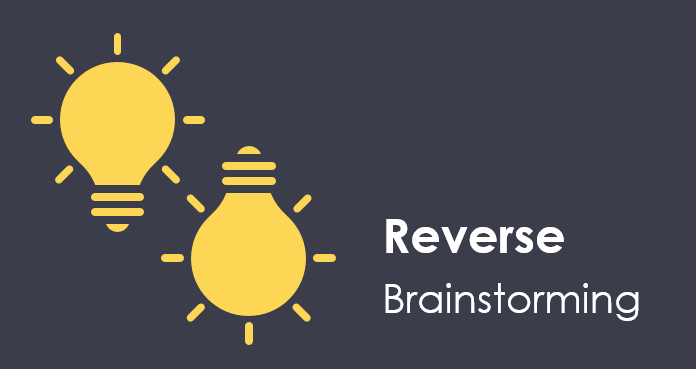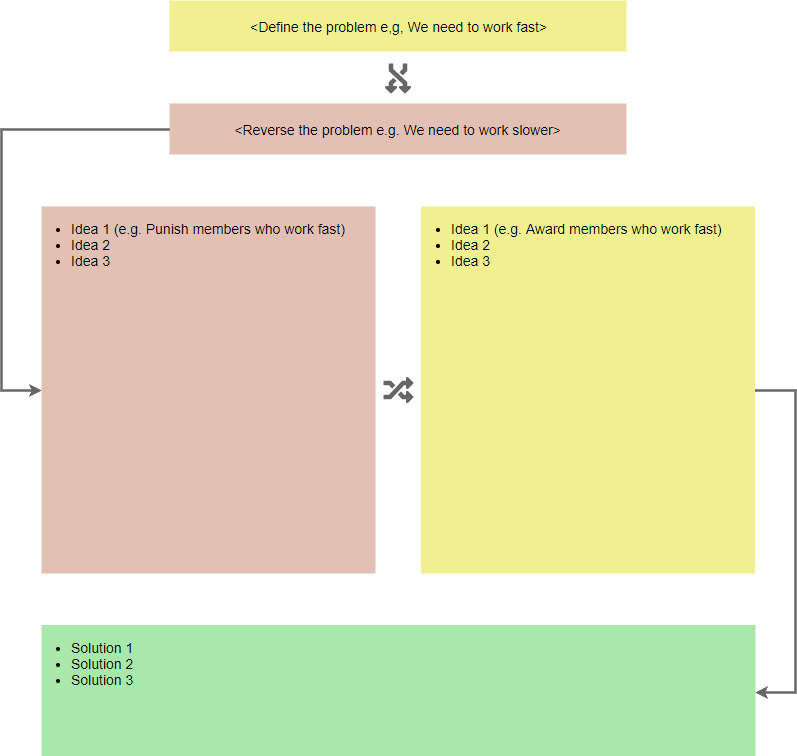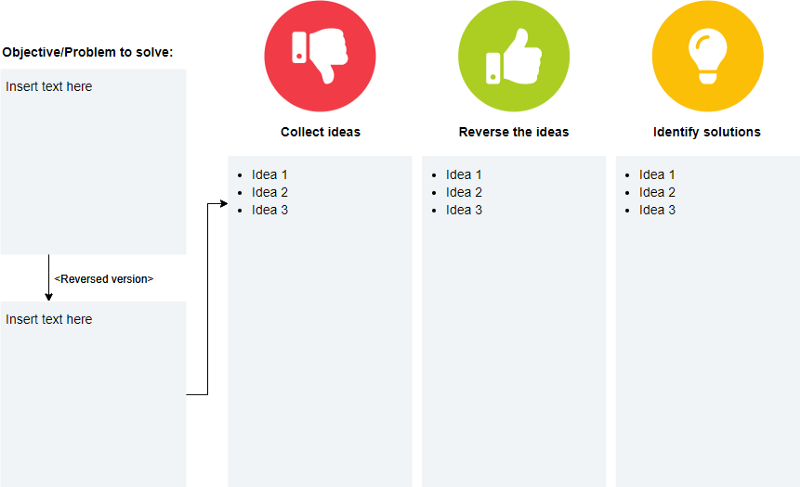When typical brainstorming encounters difficulties, it’s time to be creative. A highly creative brainstorming technique is called reverse brainstorming. It can not only make ideas flow, but also bring a lot of fun. More importantly, it can stimulate innovative ideas and useful insights to produce positive results.
The reverse brainstorming lets you create unusual and wild ideas if the brainstorming process fails to meet the requirements.

In reverse brainstorming, participants are given hints related to challenging problems to be solved or complex scenarios to achieve specific outcomes. They are asked to generate multiple ideas about how to cause problems or achieve the opposite of what is required. Then, by overturning these suggestions, solutions to the original problems may be discovered. Reverse thinking often reveals current problems that may exist in the system, and simply reducing these problems may lead to problem resolution, desired results, or improved performance.
How to Perform Reverse Brainstorming?
The reverse brainstorming method involves five steps to create designs professionally. The negative thinking allows the participants to perceive solutions that they would otherwise consider unthinkable.

- Identify the Problem — Identify a design challenge and write it down.
- Reverse the Problem: For example; instead of asking ‘how can I help? Ask ‘How can I make it worse?
- Collect Possible Solution: Brainstorm to figure out all possible reverse solutions. Everything is possible: reject nothing!
- Reverse Solutions: Flip the reverse solutions to create real design solutions for the actual issue.
- Evaluate the Ideas: Evaluate and decide if a real solution can be formed.
The above steps start and end in a similar matter to the ordinary brainstorming process. However, the inner steps are reversed to reach the best solution through understanding the worse cases.
Reverse Brainstorming Example
- Identify the Problem: Is that website visitors do not stay on the website for enough time or interact with the website content as expected?
- Reverse the Problem: The team asks a question about how to drive the users away from the website and reduce the interaction level.
- Collect Possible Solution: the methods that can drive the user away from the website rather than visiting and interacting with it.
- Build Complex Navigation So Users Cannot Find The Desired Content
- Choose A Disturbing Color Theme And Hard To Read Fonts
- Host The Website On A Slow Server
- Use Large Files That Are Hard To Load
4. Reverse Solutions: reverses all these methods to reach the possible solutions for the problem.
- Build Easy Navigation And Clear Website Structure
- Choose A Comfortable Color Theme And Easy To Read Fonts
- Choose A Reliable Hosting Service That Ensures Speed Website Loading
- Optimize The Website Content So Users Can View It Properly
5. Evaluate the Ideas: determine which of these methods do not apply to the website and how to apply the needed methods to solve the user interaction problem.
Reverse Brainstorming Templates

Edit this Reverse Brainstorming Template






